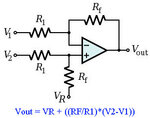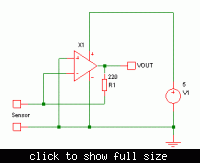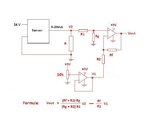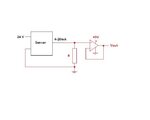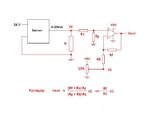Anantha Krishna
Member level 1

Hi,
I am trying to interface a pressure sensor with 4-20 mA output with an ADC. So I have to convert this current to voltage.
But the problem is that I have a single supply of 5V and I want to use LM358 single supply OP-AMP for this conversion. I successfully implemented the circuit using dual supply(+5V and -5V) in inverting amplifier mode, but I was unable to implement using single supply(+5V).
Please suggest how to implement the same circuit in non-inverting mode, so that I can convert this 4-20 mA to +ve voltage.
Thank you.
I am trying to interface a pressure sensor with 4-20 mA output with an ADC. So I have to convert this current to voltage.
But the problem is that I have a single supply of 5V and I want to use LM358 single supply OP-AMP for this conversion. I successfully implemented the circuit using dual supply(+5V and -5V) in inverting amplifier mode, but I was unable to implement using single supply(+5V).
Please suggest how to implement the same circuit in non-inverting mode, so that I can convert this 4-20 mA to +ve voltage.
Thank you.

